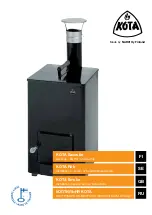
Painting the Speakers
If you intend to paint the speakers, it’s best to do so before installation. Typically, a primer coat is
not necessary.
1. Remove the speaker grille. Carefully pry on one edge with an awl or a small screwdriver. If you
choose to paint the metal grille, do so after detaching it from the speaker.
NOTE:
You may find it
helpful to thin the paint to be used on the grille. This prevents the paint from filling the holes.
2. Use the form-fitting painting mask provided
to paint the housing. Cover the slots with
masking tape.
3. After painting, remove the mask by carefully
inserting a screwdriver into the slots. Do not
puncture the drivers behind the mask with the
screwdriver.
4. When painting the grilles, be certain that the
paint does not fill the perforated holes in the
metal. If using spray paint, use two thin coats.
If using house paint or other canned paint, thin
the paint to avoid filling the holes.
Preparing for Installation
Take the following steps to prepare for installation:
1. Map out the wiring paths from the speakers to the amplifier. We recommend 18-gauge or larger
wire for runs up to 25 feet and thicker 16-gauge wire for longer runs. Be sure the speaker wire does
not rest or rub against any sharp or pointed objects.
2. Each speaker is 8 ohms nominal. When connecting more than two speakers per amplifier chan-
nel, you should use series wiring or an impedance protection device, such as a line transformer.
3. Make sure that the total system’s impedance does not fall below the amplifier’s minimum rating.
If you are not certain, consult your Boston Acoustics dealer.
5


























